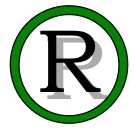Michael E. Byczek
Attorney
Trademark Law and Definitions
You may have seen the symbols with an R inside a circle or the TM and SM mark. The R inside a circle means that the company was granted federal registration. TM or SM is a signal that the company has claimed that name as an identifying mark, but have not finalized federal registration. TM refers to trademarks and SM is for service marks.
There are three primary requirements for registration: (1) must be distinct, (2) used in commerce, and (3) not an ineligible mark.
 Distinctiveness
Distinctiveness
There are three groups of distinctiveness: (1) generic, (2) capable of distinctiveness, and (3) inherently distinctive. How the mark is defined will determine eligibility for registration.
1. Generic
A generic term does not qualify for trademark protection. These are words right out of a dictionary. Examples are car, vacuum, toaster, house, and restaurant. The federal government will not allow any business to monopoly the word “restaurant” without a unique meaning. This would force all but one company in the entire country out of business. When a consumer hears the term they should immediately think of the company.
 2. Capable of Distinctiveness
2. Capable of Distinctiveness
Terms that describe a product are referred to as descriptive and do not immediately qualify for protection. An example is Coca-Cola. The company sells cola drinks made from coca plants. The term coca-cola is a description of the drink. However, the public began to associate the term coca-cola with the company and not the drink. The mark acquired what is called “secondary meaning”.
Factors to determine secondary meaning include sales, advertising, usage, exclusivity, copying, surveys, company size, and client-base. A sole proprietor who makes a few local sales a year to close family and friends is not going to acquire secondary meaning for a descriptive word.
A threshold is usually five years. If your application is for a descriptive term, the Trademark Office will place your name on the Supplemental Register (compared to the Principal Register). You can come back five years later and inform the government, with documentation, that nobody else is using the same term and the public stopped associating the word with a product description.
 3. Inherently Distinctive
3. Inherently Distinctive
These terms are also referred to as arbitrary, suggestive, and fanciful. The words are immediately associated with the company that first used it in a creative way. Examples are Google, Microsoft, eBay, Apple Computers, Whirlpool, etc.
Commerce
The basis for trademark protection is the Commerce Clause of the U.S. Constitution. The federal government has the inherent right to regulate commerce (i.e. business activities) that takes place across state lines. Business that occurs within a single state is a local matter, not federal. Therefore, federal trademark powers are limited to protecting businesses that conduct commerce across state lines, including the Internet.
A local company that never conducts commerce outside of a small geographic area may be denied federal trademark protection. The alternative is registering your mark with state government and/or stopping infringement with an unfair competition lawsuit.
Terms not Eligible for Registration
Some terms never qualify for registration. However, it is possible to mix and match words to form a descriptive word that could acquire secondary meaning over time.
- Immoral, deceptive, or scandalous matter
- Matter which may disparage or falsely suggest a connection with persons, institutions, beliefs, or national symbols, or bring them into contempt, or disrepute
- Geographical indication that identifies a place other than the origin of wines or spirits
- Flag or coat of arms or other insignia of the United States, State, municipality, or foreign nation
- Name, portrait, signature of a living individual without consent
- Name, signature, or portrait of a deceased Present of the United States during the life of his widow, without consent
- A term that resembles an existing mark, registered or not, as to be likely to cause confusion, mistake, or deceive (unless eligible for concurrent registration)
- Merely descriptive or deceptively misdescriptive
- Primarily geographically descriptive or deceptively misdescriptive
- Primarily a surname
- Comprises of any matter that, as a whole, is functional
- Mark that would cause dilution
Sources
Federal Statutes: U.S. Code Title 15 (Commerce and Trade) Chapter 3 (Trademarks)
U.S. Code of Federal Regulations: CFR Title 37
Trademark Manual of Examining Procedure (TMEP)
The TMEP is a set of practicing guidelines used by federal examiners to evaluate a trademark application. It puts both federal laws and rules into perspective on how to process an application.
For example, section 1402.03(d) titled Identifying Computer Programs with Specificity explains:
Due to the proliferation and degree of specialization of computer programs, broad specifications such as "computer programs in the field of medicine" or "computer programs in the field of education" will not be accepted, unless the particular function or purpose of the program in that field is indicated. For example, "computer programs for use in cancer diagnosis" or "computer programs for use in teaching children to read" would be acceptable.